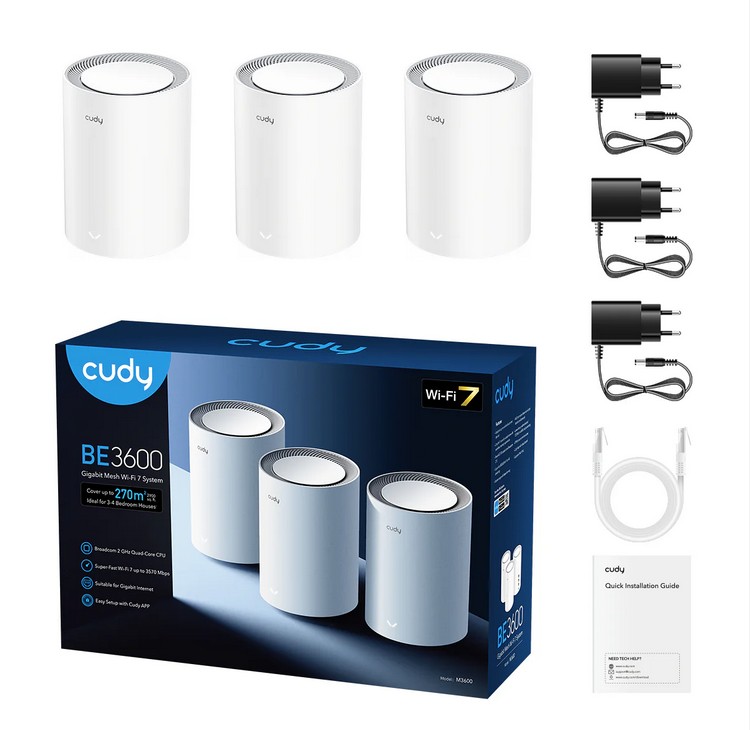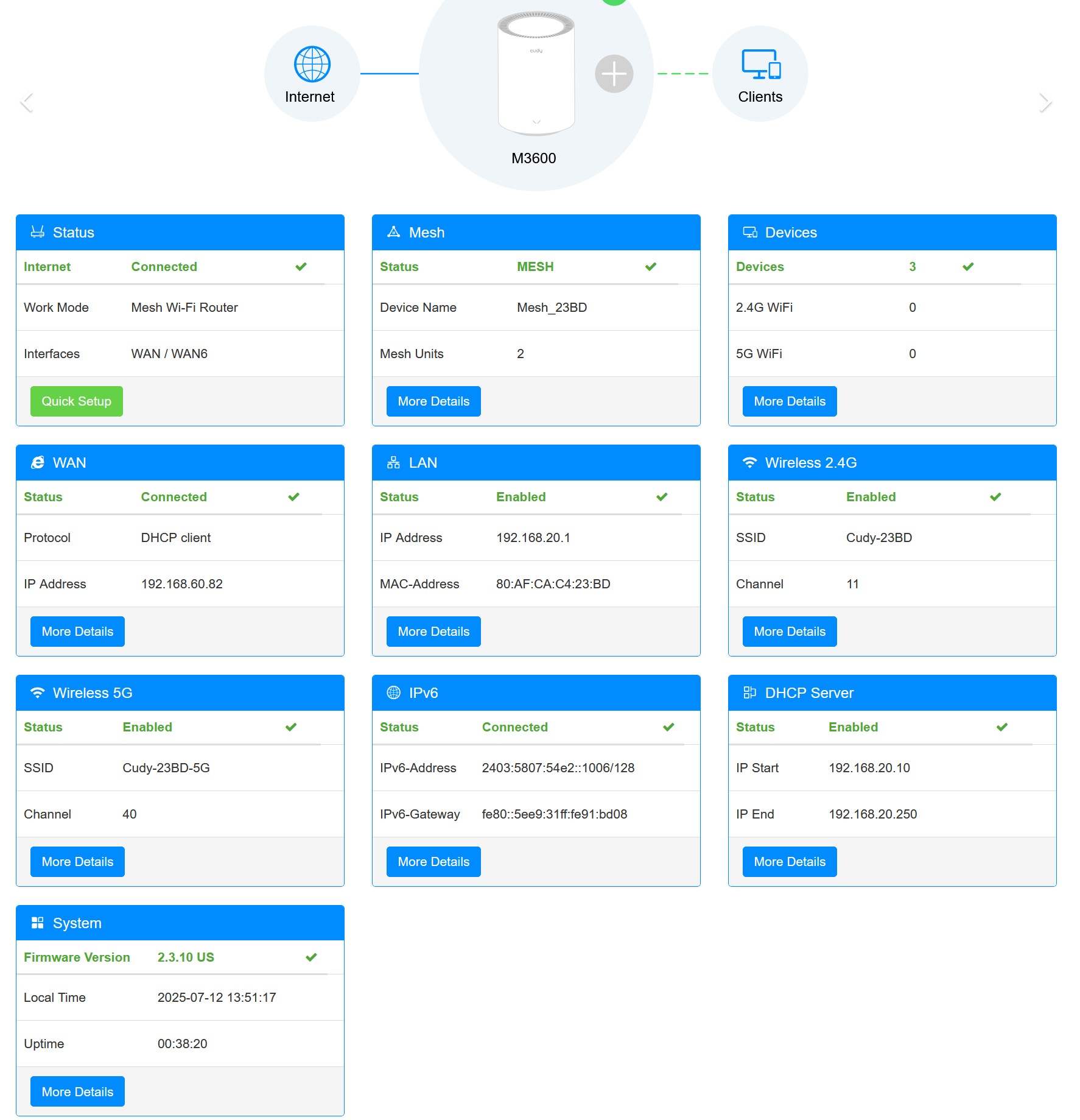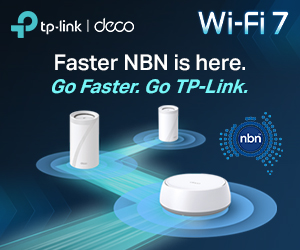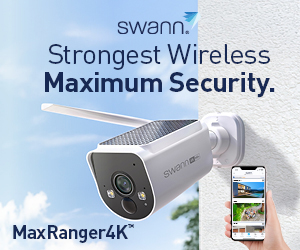The Cudy M3600 Wi-Fi 7 dual-band BE3600 mesh router saves money by utilising all Wi-Fi 7 ‘go-fast’ protocols, but it only uses the 2.4 and 5 GHz bands.
Now, before we review any new brand, we do extensive checking to see if this is up to our standards. So here is what we found, and please do not take this as an endorsement. The review is objective and will tell you if this is a product worth your hard-earned dollars.
The Pitch
Powertec is a respected company established in 1995 on the Gold Coast, with offices in NSW, Victoria, WA, QLD, NT and New Zealand. It is a recognised connectivity expert, pioneering in carrier-grade commercial communications products and solutions.
It has over 2,000 resellers and retailers, local and international, and a good many are regional and rural-based. Why? It is the exclusive Australian/Pacific distributor for Nextivity, a leading developer of cellular coverage technology under the Cel-Fi mobile brand. Read You can boost mobile phone reception at home or on the move.
Shenzhen Cudy Technology (Cudy) was established in 2018. It is a privately held networking and home products brand selling in over 80 countries. It is a manufacturer with a 200,000m2 modern, automated, clean room factory making over 700,000 units a month. Interestingly, Cudy has set some sort of record with only three CVEs for its 4G LT400 router in 2023. It is no mean feat to stay ahead of CVEs. User reviews (brand) are 100% positive.
Now, we are very happy reviewing Netgear, ASUS, D-Link and TP-Link, as these brands pretty well have the lion’s share. Powertec convinced us that Cudy was an up-and-coming brand and was selling well in regional areas.
Australian Review: Cudy M3600 Wi-Fi 7 dual-band BE3600 mesh router
Firmware 2.3.10 20250331-175430 as at 12/7/25.
| Model | Cudy M3600 Wi-Fi 7 BE3600 |
| Website | Cudy Site Powertec Australian Distributor Quick setup guide |
| Price | 2-pack $349.90 3-pack $449.90 plus delivery |
| From | Powertec or its resellers |
| Warranty | 12 months |
| Chipset | Broadcom BMC6764 2 GHz |
| OS | OpentWRT |
| RAM/Storage | 128/512 MB |
| Ports | Gigabit WAN x 1 Gigabit LAN x 2 |
| Power | 12V/1A/12W DC plug pack 9W maximum |
| Streams | 4 x 5dBi (2 x Tx and 2 x Rx) 2 x 2 MIMO |
| Bandwidth | Dual band 2.4 GHz 688 Mbps 20/40 MHz 5 GHz 2882 Mbps 20/40/80/160 MHz |
| Wi-Fi 7 features | 4K-QAM, MLO, MRU, OFDMA, BSS Colour, Puncturing |
| Internet protocol | IPv4 and IPv6 |
| Backhaul | Wi-Fi or Gigabit Ethernet |
| App | V 1.3.4 Most features expected of OpenWRT |
| Size | 110 round x 154.5 mm tall |
Ratings
We use the following ratings for many of the items below. CyberShack regards 70/100 as a pass mark. You can click on most images to enlarge them.
- Fail (below expectations), and we will let you know if this affects its use.
- Pass(able) rating that is not as good as it should be.
- Pass (meets expectations).
- Pass ‘+’ rating to show it is good, but does not quite make it to Exceed
- Exceed (surpasses expectations or is the class leader).

First Impression – nice packaging
My first impression is that I don’t know the brand, and as such, I spent a lot of time looking into its pedigree. We are reviewing this solely on Powertec’s recommendation.
I don’t usually comment on packaging, but this comes in a well-illustrated box with all the specs needed to give you the confidence to buy.
As for the router/satellites, they are all the same – the router is the one you connect the NBN Ethernet to.
The round cylinders are designed for desktop or bookshelf use – there are no mounting holes or brackets. At the back is a Gigabit WAN port and 2 Gigabit LAN ports, power, WPS button and a reset hole. The build quality is fit for purpose – they are not as well finished as our other brands. For example, the Ethernet ports are marked 1-3, but there is no marking for WAN or LAN – I know, read the manual. Said ports are also very hard to remove Ethernet cables with protective collars. Our other brands don’t suffer from that issue.
My opinions are formed during the review, so let’s get on with it.

Setup – Straightforward for a tech-savvy type
The Quick Installation Guide instructed me to download the Cudy app for Android or iOS, which I did, expecting it to guide me through the setup. Wrong. I had to sign in and get a Cudy Account – we will look at privacy later. But the app does not do a setup.
You must use a browser and access the IP address http://cudy.net/ or its default 192.168.0.1. There is a Wizard that can guide you through allocating the SSID, password, admin password, etc. The web interface is shown below.



Backhaul – Passable Wi-Fi and Pass Ethernet cabled
You need to understand that if using Wi-Fi backhaul, you must use a significant portion (we estimate at least 1024 Mbps) of the 5 GHz channel to communicate between the router and satellites. With only 2,882 Mbps full duplex, the bandwidth is limited, making it challenging to achieve the maximum connection speeds of 2,402 Mbps on a smartphone or PC.
Fortunately, it also supports MLO (Multi-Link Operation), so it can allocate unused 2.4 and 5 GHz bandwidth to backhaul. Still, it is tight and not for homes with lots of IoT and power users.
If you use a Gigabit Ethernet cable backhaul, you get the full BE3600 bandwidth for devices.
Connect speeds – As expected
In summary
- Maximum NBN Internet speed: 1000 Mbps
- Wi-Fi backhaul: 1000Mbps
- LAN speed: Maximum 1000 Mbps
- Maximum connect speed 5 GHz 1024/1024
- Maximum connect speed MLO 2401/2401
- Maximum connect speed 2.4GHz 229/229
Power Use – Pass+
It’s rated at 9W per router or satellite – minimal power use. The plug pack is slimline, but the 1200mm length cable can be limiting.
Security
There are no inbuilt security features. There is no add-on router intrusion app.
Tests – Pass
| Distance | Download (max 200) | Upload (max 40) | Signal Strength | Rx Mbps | Tx Mbps |
| 2m from Router | 186 | 27 | -31 | 2161 to 2594 | 1286 to 1361 |
| 2m from Satellite 10m line of sight | 162 | 26 | -38 | 1713 to 2322 | 114 to 793 |
| 2m from Satellite 10m through 2 walls and cupboards | 143 | 21 | -66 | 720 to 865 | 62 to 673 |
| 5m from router | 167 | 22 | -46 | 2161 to 2530 | 146 to 1105 |
| 5m from Satellite 10m line of sight | 136 | 20 | -43 | 1729-2201 | 96 to 866 |
| 5m from Satellite 10m through walls | 93 | 18 | -76 | 366 to 666 | 46 to 366 |
| Ethernet cable from Satellite to Router | 184 | 26 | -31 | 2161 to 2402 | 1286 to 1361 |
What does this mean?
- TX is affected by the Wi-Fi backhaul (transmitting to the router)
- Signal strength, line of sight, is quite good, and you could place the satellite up to 10 m away, line of sight and get close to maximum speeds from the device to the router.
- Signal strength through plasterboard walls and built-ins means that you will still get a usable signal, but at 5-8m away, it is verging on unusable.
These results show that a BE3600 is fine for small home use, but preferably using Ethernet backhaul.
Privacy – Unknown
There has been a lot of mud thrown at TP-Link (Read Give TP-Link a break – No spyware for you) and other Chinese companies because they ‘might’ be controlled by the Chinese Communist Party, and who knows, maybe even have a kill switch or spyware.
We don’t subscribe to ‘mud’ and must believe that Cudy is doing its best to earn a place in this highly competitive market segment.
We have attached the 6564-word Terms of Use and the 1890-word privacy policy.
Although there is no mention of China, the absence of information on the Cudy cloud’s location and the jurisdictional country is notable.
We suggest Powertec analyse the issues and consider a more localised approach.
CyberShack’s View: Cudy M3600 Wi-Fi 7 dual-band BE3600 mesh router is a no-frills router
I was highly sceptical of dual-band mesh, even with Wi-Fi 7 go-fast smarts, being effective. I am mildly impressed. No, it does not have 6 GHz, which is why it is lower cost than tri-band.
While I suggest wired backhaul, these perform adequately to about 10 metres line-of-sight and 5-8 metres through walls and cupboards.
Cudy has BE56500, BE11000, and BE21000 mesh coming, and depending on cost, could become a significant player.
Competition
We have just reviewed the TP-Link Deco BE25 Wi-Fi 7 BE5000 mesh on a budget (review). It is BE5000, and that leaves a little more bandwidth free for Wi-Fi backhaul and has 2.5GB Ethernet ports. Its RRP is $599. It is readily available at $450 (3-pack), has a 3-year warranty, a fully featured app, onboard security, and we feel better designed and built.
I understand that TP-Link has a BE22 BE3600 coming, and it uses the same Broadcom chipset as Cudy, and is expected to be under $400 for a 3-pack.
D-Link’s Wi-Fi 7 range is coming from BE3600 to BE11000, and we expect it will be price-competitive.
Netgear has no plans for any mesh under BE11000 tri-band.
ASUS has the ZenWiFi BD4 BE3600 dual band for about $500 (3-pack)
Cudy M3600 Wi-Fi 7 rating
It is a bit of a conundrum as it is very much an entry-level Wi-Fi 7 (sans 6GHz) BE3600 mesh.
With Ethernet backhaul, it’s a reasonable price and would handle most typical users’ needs. It would rate more highly when used this way.
But we have to rate it with Wi-Fi backhaul, I suspect we would give the same advice to purchasers – you really need tri-band.
- Features: 75. It is no frills, gigabit ports, BE3600 dual band and a basic app.
- Value: 75. It is reasonable value, but there are faster and more featured options for a similar price.
- Performance: 75. Wi-Fi backhaul limits the coverage and throughput.
- Ease of use: 75. The old-school web page setup is easy, but more users will expect an app. The app works after you have set it up.
- Design: 75. It’s a typical, generic cylinder.
CyberShack Verdict
Cudy M3600 Wi-Fi 7 dual-band BE3600 mesh router
$449.90 for 3-pack












2 comments
Md. Shabuj Hossen
I need Cudy router(WiFi 7 Mesh)
Model:
01) TP-Link Deco BE23 Dual-Band BE3600
02) TP-Link Deco BE25-Outdoor BE5000
03) TP-Link Deco BE63 Tri-Band WiFi 7 BE10000
04) TP-Link Deco XE70 Pro AXE4900
05) TP-Link Deco BE85 Tri-Band WiFi 7 BE22000
Ray Shaw
Sorry but we don’t sell anything.